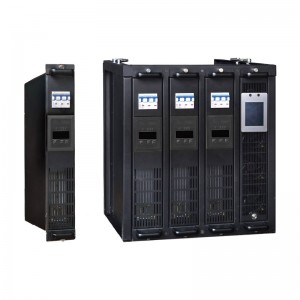HYSVG+C intelligent power quality integrated management device provides accurate reactive power compensation, reduces harmonic distortion and balances three-phase loads. The modular architecture is designed for small-capacity systems such as JP cabinets to ensure stability and energy efficiency, and achieves seamless expansion through hot-swap technology.
HYSVG+C intelligent power quality integrated management device combines reactive power compensation with harmonic suppression and three-phase unbalance correction to effectively address key challenges in modern power systems. Designed for small applications such as JP cabinets, it can optimize energy efficiency while stabilizing grid performance. Advanced algorithms support real-time adjustments and ensure high compensation accuracy even under load fluctuations. By dynamically managing reactive power flows, line losses can be reduced, voltage regulation capabilities can be enhanced, and long-term cost savings and greener energy utilization can be achieved.
A highlight of the HYSVG+C intelligent power quality integrated management device is its modular hot-swappable design, which allows for easy expansion and maintenance without system downtime. Each module operates independently, and the failure of a single unit will not affect the overall function, making it very suitable for mission-critical environments. The ultra-thin structure and touch screen interface simplify operation and support one-click configuration for rapid deployment. The plug-and-play approach does not require complex debugging, and technicians of different professional levels can easily get started.
HYSVG+C intelligent power quality integrated management device performs well in coordination with existing infrastructure, especially when used in conjunction with intelligent capacitors, forming a hybrid system that can simultaneously solve low-frequency and high-frequency power quality problems. Reactive power compensation has almost zero delay, can offset voltage sags and swells, and suppress harmonics up to 50th order. This dual-action function ensures compliance with strict industrial standards, protects sensitive equipment from damage, and minimizes downtime.
By optimizing reactive power distribution, unnecessary power consumption can be reduced, lowering the carbon footprint. Lower self-power consumption further enhances sustainability, in line with global green energy initiatives. The compact footprint and simplified wiring requirements also make it easy to retrofit into existing systems in space-constrained environments.
Post time: Jun-06-2025




